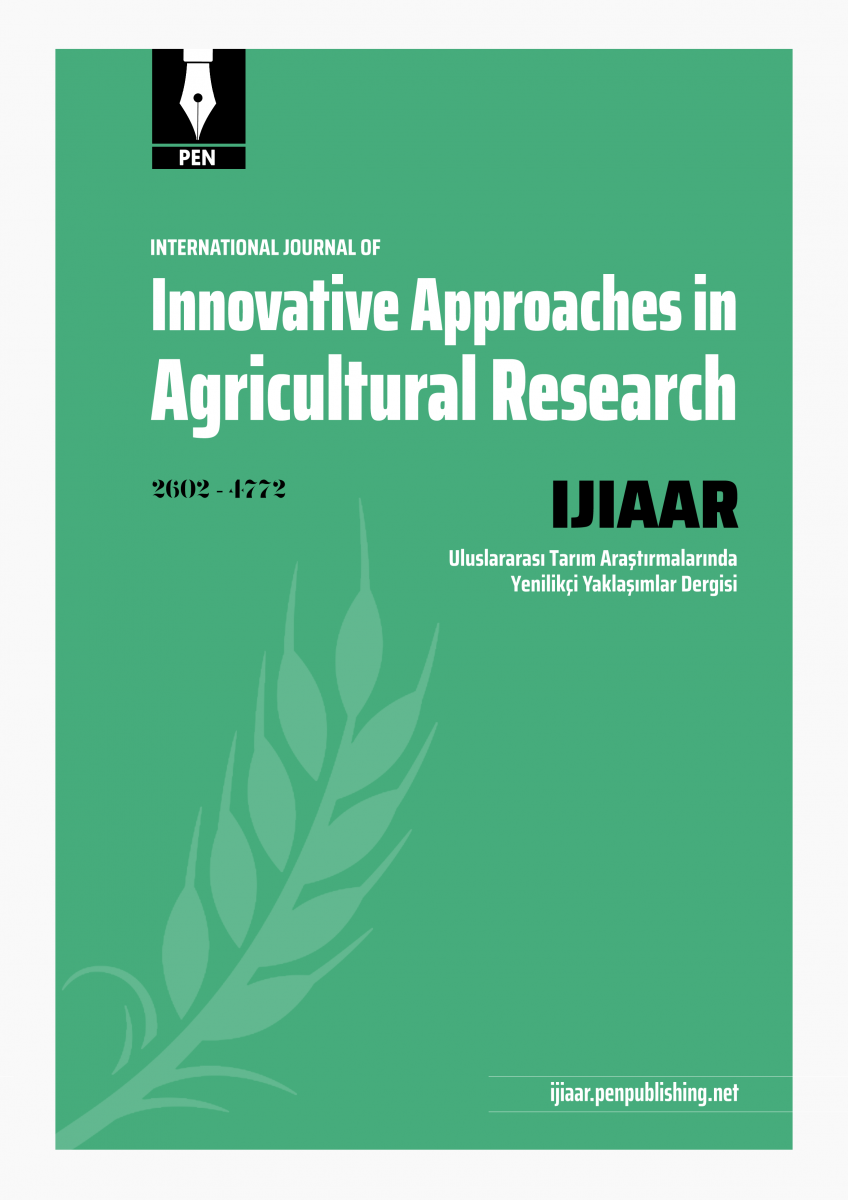Original article | Open Access
International Journal of Innovative Approaches in Agricultural Research 2019, Vol. 3(4) 690-697
Line x Tester Analysis for Seed Yield and Its Related Traits in Brassica napus L.
pp. 690 - 697 | DOI: https://doi.org/10.29329/ijiaar.2019.217.15
Published online: December 10, 2019 | Number of Views: 102 | Number of Download: 615
Abstract
The research was conducted in the experimental area of Department of Plant Breeding and Genetics, University of Agriculture, Faisalabad. Experiment was conducted to evaluate the combining ability effects. Six lines viz. ZM-R-10, Chakwal Sarsoon, ZM-R-12, ZM-R-13, B-56 and ZM-R-11 and four testers viz. ZM-R-8, ZM-M-9, ZM-R-1, and ZMM-5 were crossed through line × tester breeding scheme. Twenty four crosses and their parents were evaluated using triplicate randomized complete block design. Data were recorded on yield and its related traits (plant height, primary branches per plant, secondary branches per plant, number of siliquae per plant, number of seeds per siliqua, 1000-seed weight, siliqua length, seed yield per plant). The recorded data were subjected to analysis of variance, and combining ability. Significant differences among entries for yield and it related traits indicated existence of genetic variability in breeding material. Lines Chakwal Sarsoon, ZM-R 12, ZM-R-13, B-56 and testers ZM-R-1, ZM-M-5, ZMM-9 were potential parents and good general combiners. Crosses Chakwal Sarsoon × ZM-R-1 Chakwal Sarsoon × ZM-M-5, ZM-R 12 × ZM-R-1 ZM-R 12 × ZM-R-8, ZM-R-11 × ZM-R-8, Chakwal Sarsoon × ZM-M-5, ZM-R-13 × ZM-R-8 and ZM-R-10 × ZM-R-8 were potential crosses and good specific combiners. The variances due to SCA were more than GCA which showed the role of non-additive gene action.
Keywords: Brassica napus, seed yield, combining ability analysis
| How to Cite this Article |
|---|
|
APA 6th edition Harvard Chicago 16th edition |
| References |
|---|
|

